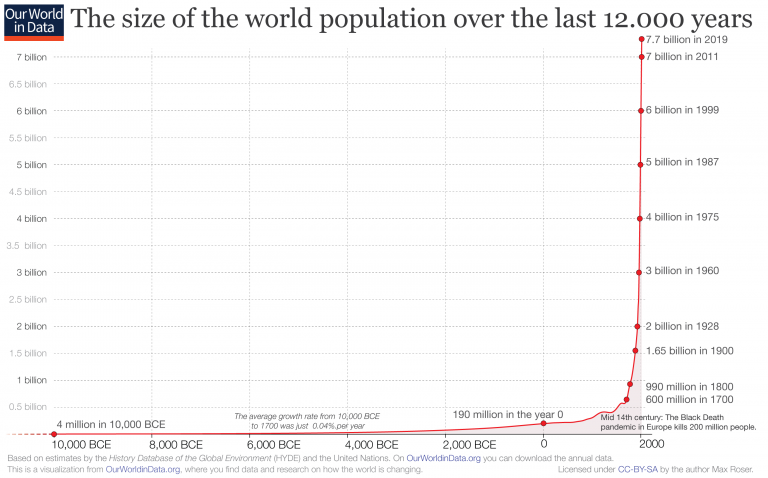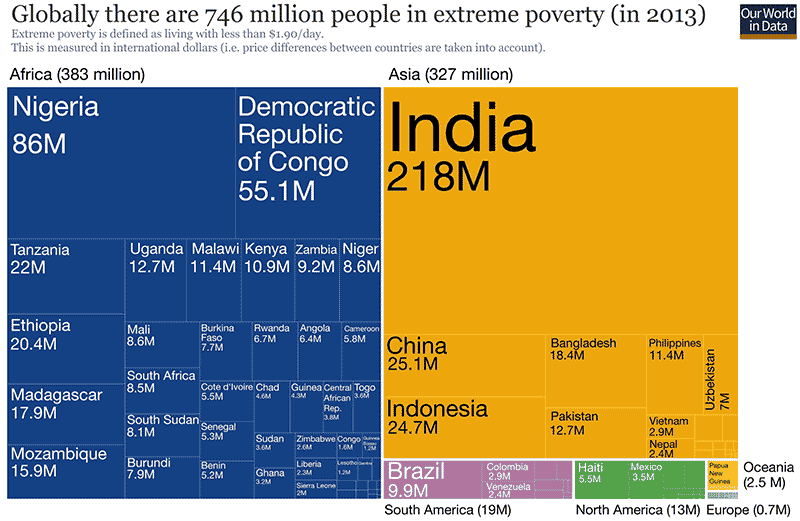At developmenteducation.ie, we’re big fans of the excellent website Our World in Data. For anyone interested in learning or teaching about world development in almost all its dimensions, there are few better places to keep an eye on. For the educator and teacher, the site offers intensely rich material and ideas for research, class or workshop preparation or for project and research ideas.
Developed and maintained by Global Change Data Lab, a group based at the University of Oxford and the non-profit organisation which publishes and maintains the website and its associated data tools, the project maintains two integrated sites Our World in Data and their SDG Tracker (presenting data and research on the UN’s Sustainable Development Goals).
Our World in Data offers 2,700+ charts covering 297 topics – don’t panic, they are readily accessible and readable by topic: Environment, development, population, health, urbanisation, gender, agriculture, hunger etc. are all covered. The online publication is made available in its entirety as a public good. Visualisations and text are licensed under Creative Commons and may be freely used for any purpose. The data is available for download.
As a taster, we offer a few highlights from the recent upload on world population, patterns and trends.
8 out of 10 people in the world will live in Asia or Africa by 2100 and Europe is the only region where population is expected to fall
- The United Nations projects that world population growth (based on a medium growth scenario) will slow significantly over the course of the 21st century, coming close to its peak at 11 billion by 2100
- The striking change between now and 2100 is the expected growth in African population. Today, its population is around 1.3 billion; by 2100 it’s projected to increase 3.5-fold to 4.5 billion
- Over the past 50 years Asia experienced rapid population growth. Today its population stands at around 4.6 billion. By 2050 it’s expected to rise to 5.3 billion, but then fall in the latter half of the century. By 2100 Asia’s population is projected to fall almost back to levels we see today
- Today, Africa has just over 17% of the global population; by 2100 this is projected to rise to 40% while Asia will see a significant fall from almost 60% today to just over 40% in 2100
- North, Central and South America, and Oceania, are projected to experience a rise in population this century – but this growth will be much more modest relative to growth in Africa
- Europe is the only region where population is expected to fall – today its population stands at around 743 million; by 2100 this is projected to fall to 653 million.
India will soon overtake China to become the most populous country in the world
- China has been the world’s most populous country for a long time: back in 1750, it had a population of 225 million which was 28% of the world population; by 2016, China had a population larger than 1.4 billion
- But China is soon to be overtaken by India, current projections from the UN’s Population Division suggest that by 2024, India will surpass China to become the world’s most populous country.
Global population growth rate peaked long ago
- Global population growth reached a peak in 1962 and 1963 with an annual growth rate of 2.2%; but since then, world population growth has halved
- For the last half-century we have lived in a world in which the population growth rate has been declining. The UN projects that this decline will continue in the coming decades.
- Is the global population growing exponentially? No is the answer. For population growth to be exponential, the growth rate would have be the same over time (e.g. 2% growth every year). In absolute terms, this would result in an exponential increase in the number of people. That’s because we’d be multiplying an ever-larger number of people by the same 2%. 2% of the population this year would be larger than 2% last year, and so on; this means the population would grow exponentially
- Since the 1960s the growth rate has been falling. This means the world population is not growing exponentially – for decades now, growth has been more similar to a linear trend.

The top five most populous countries in 2019 are:
- China (1.42 billion)
- India (1.37 billion)
- United States (329 million)
- Indonesia (269 million)
- Brazil (212 million)
Our World in Data, in its population review also explores a range of related issues such as the causes of population growth, how levels of development affect population growth rates; it also has a fascinating (and revealing) section on Data Quality and a series of excellent, linked reference sources.






